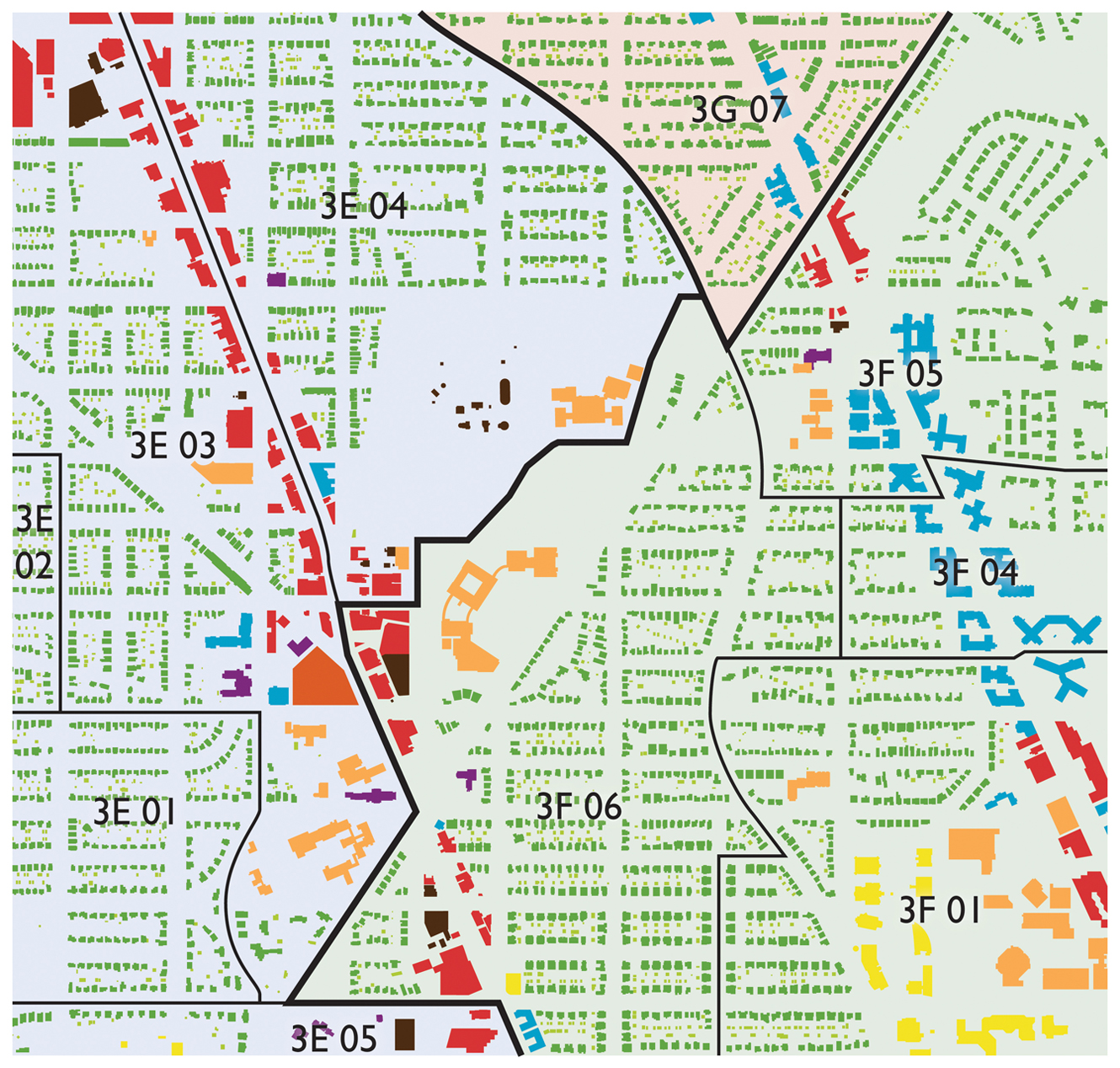If we compare the other legal structures to the ANC geography, some other interesting trends come to light. Take the elementary schools, for example:
 ANC 3E meetings sometimes show a myopia about issues related to Janney. I remember in a discussion about the Tenley-Friendship Library, a number of parents reacted negatively when I suggested moving the library into Fort Reno Park to free up the corner to development. Their reasoning was that it would lengthen the trip from school to the library, oblivious to the fact that three other schools would be much closer to the library with the switch. If you look at the map, it’s easy to see why Janney gets the attention Murch doesn’t.
ANC 3E meetings sometimes show a myopia about issues related to Janney. I remember in a discussion about the Tenley-Friendship Library, a number of parents reacted negatively when I suggested moving the library into Fort Reno Park to free up the corner to development. Their reasoning was that it would lengthen the trip from school to the library, oblivious to the fact that three other schools would be much closer to the library with the switch. If you look at the map, it’s easy to see why Janney gets the attention Murch doesn’t.
It’s not necessarily wrong; representatives should be representing their constituents interests even as they make prudent decisions for the general public. Nonetheless, it’s problematic that representation boundaries cut up the strongest community center in the area and cause errors in the representation of the neighborhood. Much more on that later.
Take a look at zoning-versus-ANC:
I’m not sure how the ANCs were mapped out, but the divisions show that commissioners have relatively mixed single-member districts. A map of building use shows more diversity, but it isn’t much different in terms of complexity.
Smear of houses her, smear of stores there. Still, it’s pretty mixed up, and most commissioners represent multiple types of residences. Notable exceptions might be 3E 01 and 3F 04, which overwhelmingly contain detached homes and apartment buildings, respectively.


